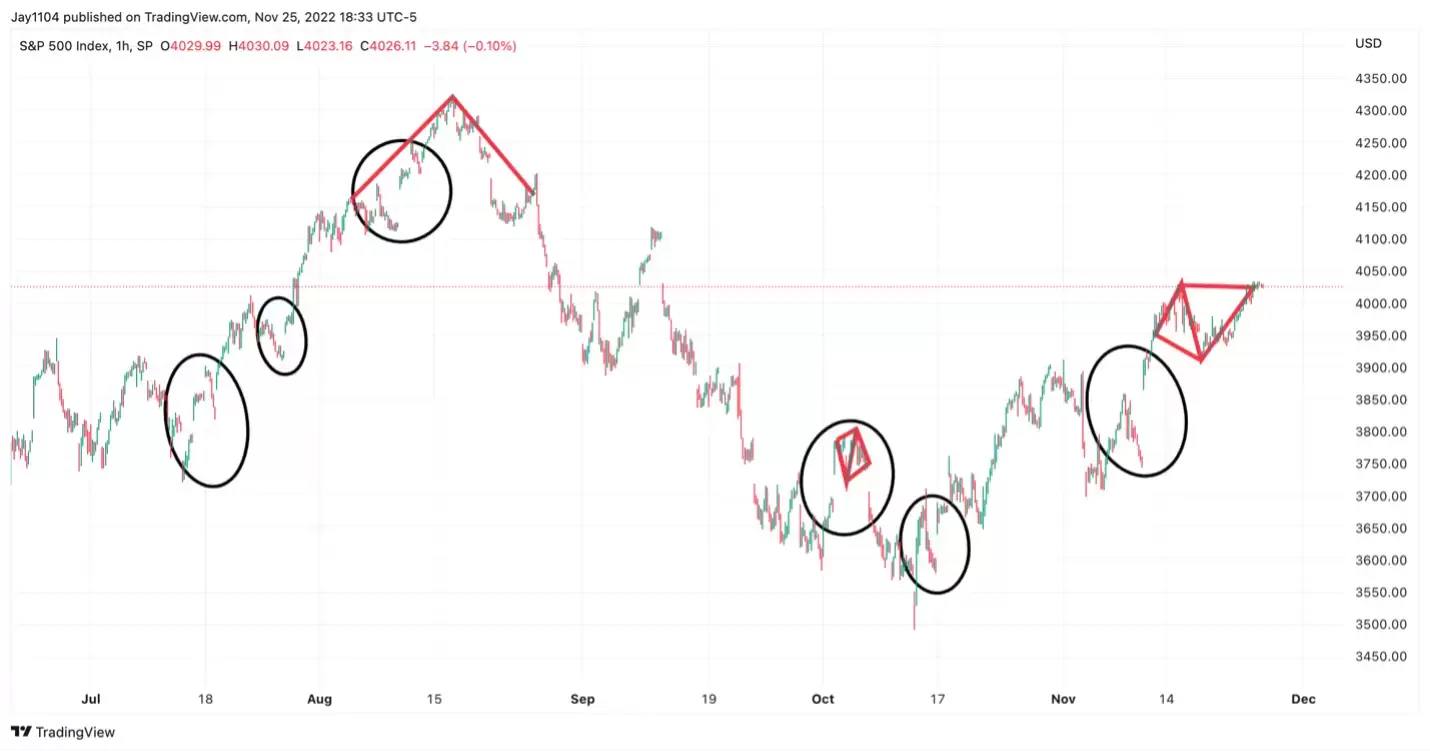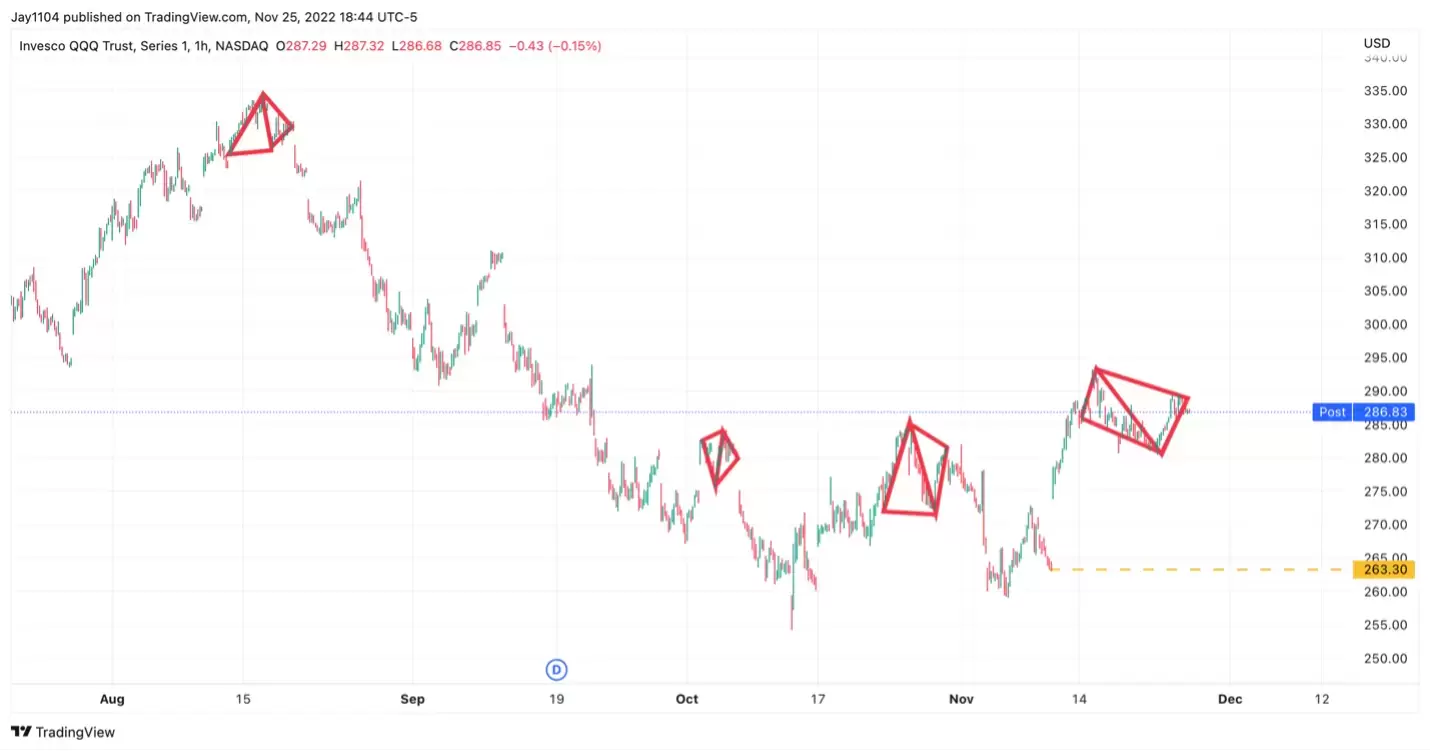The October reading of the personal consumption expenditures (PCE) price index, due out on 1 December, is expected to show inflation easing slightly from September levels. However, if estimates prove too low, US markets could enter a period of volatility.
In October, the headline PCE price index is estimated to have risen 0.4% month-on-month and 6% year-on-year, while the so-called “core” PCE price index – which strips out volatile food and energy costs, and is said to be the US Federal Reserve’s preferred measure of inflation – is forecast to have increased 0.3% month-on-month and 5% year-on-year. The year-on-year inflation estimates represent modest improvements compared to the previous month. Headline PCE grew 6.2% in the year to September, while core PCE increased 5.1%.
The Cleveland Fed estimates that PCE and core PCE inflation are running at 6.0% and 5.0%, respectively (see chart, below). But there is a wrinkle here because the PCE and core PCE estimates fell after the consumer price index (CPI) report for October, which came out on 10 November, showed inflation easing to a lower-than-expected 7.7%. However, the post-CPI downward shift in PCE inflation data could be a mistake. In October, technical changes were made to the way in which health insurance costs are calculated in the CPI. These changes will not be made in the PCE report, which means PCE estimates may prove too low.

Inflation could exceed expectations
The October CPI report saw health insurance costs fall more than 4% month-on-month, the biggest decrease since records began in 2006 (see chart, below). Lower costs for health insurance, which has a nearly 1% weighting in the overall CPI index, exerted a negative drag on headline and core CPI, resulting in both readings coming in below estimates.

In light of all this, there is a possibility that the PCE measure of inflation could come in higher than expected on Thursday. Given the significant drop in health insurance costs – which form part of the CPI but not PCE – it’s easy to see why the Fed prefers the PCE report.
Stock market rally may have unstable footing
US stock markets have rallied since the 10 November CPI report, which may leave the S&P 500 in an unstable pattern. The pattern has been repeated several times in 2022, as indicated by the circled areas in the chart below. Typically, this pattern involves a sharp gap higher and a vertical rally. In July and October, these moves gave way over time. This resulted in the S&P 500 falling back and filling the gap, as happened in the second half of August and the middle of October. Now, a similar type of unwinding could result in the S&P 500 falling back to 3,580 and filling the gap from mid-October.
Additionally, the topping pattern in the S&P 500 is a diamond reversal, suggesting that the S&P 500 could see a sharp decline.

The Invesco QQQ ETF, an exchange-traded fund (ETF) that tracks the Nasdaq 100 Index, hasn't recovered nearly as much as the S&P 500, but it does have a similar diamond reversal pattern to the S&P 500, as shown in the chart below. The QQQ has seen the pattern develop multiple times in recent months. Each time, the pattern has resulted in all of the gains being erased.
In the present case, such a drop could result in the QQQ ETF filling the gap at $263. It would be roughly the equivalent of the Nasdaq 100 Index falling to around 10,800.

While the PCE report for October is just one of several key economic events this week, it is certainly one for traders to watch. If the technicals play out as they have in the past, the first few days of December may flatten any hope for an end-of-year rally.
Other events worth monitoring this week include the all-important US jobs report on Friday and, before that, Fed chair Jay Powell’s speech at the Brookings Institution on Wednesday.
Charts used with the permission of Bloomberg Finance LP. This report contains independent commentary to be used for informational and educational purposes only. Michael Kramer is a member and investment adviser representative with Mott Capital Management. Mr Kramer is not affiliated with this company and does not serve on the board of any related company that issued this stock. All opinions and analyses presented by Michael Kramer in this analysis or market report are solely Michael Kramer's views. Readers should not treat any opinion, viewpoint, or prediction expressed by Michael Kramer as a specific solicitation or recommendation to buy or sell a particular security or follow a particular strategy. Michael Kramer's analyses are based upon information and independent research that he considers reliable, but neither Michael Kramer nor Mott Capital Management guarantees its completeness or accuracy, and it should not be relied upon as such. Michael Kramer is not under any obligation to update or correct any information presented in his analyses. Mr. Kramer's statements, guidance, and opinions are subject to change without notice. Past performance is not indicative of future results. Past performance of an index is not an indication or guarantee of future results. It is not possible to invest directly in an index. Exposure to an asset class represented by an index may be available through investable instruments based on that index. Neither Michael Kramer nor Mott Capital Management guarantees any specific outcome or profit. You should know the real risk of loss in following any strategy or investment commentary presented in this analysis. Strategies or investments discussed may fluctuate in price or value. Investments or strategies mentioned in this analysis may not be suitable for you. This material does not consider your particular investment objectives, financial situation, or needs and is not intended as a recommendation appropriate for you. You must make an independent decision regarding investments or strategies in this analysis. Upon request, the advisor will provide a list of all recommendations made during the past 12 months. Before acting on information in this analysis, you should consider whether it is suitable for your circumstances and strongly consider seeking advice from your own financial or investment adviser to determine the suitability of any investment. Michael Kramer and Mott Capital received compensation for this article.
Disclaimer: CMC Markets is an execution-only service provider. The material (whether or not it states any opinions) is for general information purposes only, and does not take into account your personal circumstances or objectives. Nothing in this material is (or should be considered to be) financial, investment or other advice on which reliance should be placed. No opinion given in the material constitutes a recommendation by CMC Markets or the author that any particular investment, security, transaction or investment strategy is suitable for any specific person. The material has not been prepared in accordance with legal requirements designed to promote the independence of investment research. Although we are not specifically prevented from dealing before providing this material, we do not seek to take advantage of the material prior to its dissemination.






